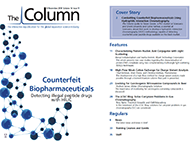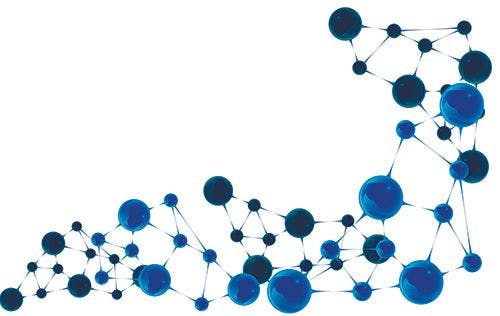Rum Classification Using HS-SPME-GC–MS
Researchers from the University of Almeria have developed a method for the classification of rum using HS-SPME-GC–MS.
Photo Credit: BRBN~LVR / stock.adobe.com

Researchers from the University of Almeria have developed a method for the classification of rum using headspace solid-phase microextraction coupled to gas chromatography–mass spectrometry (HS-SPME-GC–MS) (1).
With an unsavory past, and an unsavory regulatory landscape, rum, unlike its spiritual sibling whiskey, has a classification system as wild as the sea farers it is so often associated with. Despite this regulatory confusion, the sugar cane spirit continues to grow in popularity. This invention and innovation has seen world consumption rates for rum reach more than 1 billion litres per year with an expected increase of 1.9% in volume terms moving into 2021 (2,3).
The complex creation process of rum is part of its appeal, requiring the addition of different spices and ageing times, along with delicate blending processes to procure its characteristic charm, but it is also the source of its classification woes. Rums can be classified according to the raw material used, the fermentation process, distillation process, ageing periods, type of barrel used, blending technique, alcohol strength, and additives (if any!). Because of this lack of clear universal legislation, loose terms relating to ageing periods, such as “Añejo”, “Dorado”, “Premium”, “Super Premium”, or “Reserve” are used. Unfortunately, there is often little justification for their usage because the blending of rums from different ages is common and the age required to be displayed can vary. EU and US legislation insist the label refers to the youngest rum in the blend (4,5), whereas other countries, such as Canada, can refer to the oldest in the blend, even if the oldest rum used constitutes very little of the final volume. Therefore, the development of methods that allow reliable characterization of rums is essential.
Researchers used a simple and automated HS-SPME-GC–MS method with a range of data analysis techniques to classify the rums based upon the most discriminant compounds of the volatile fraction. Targeted analysis found some chemical indicators, such as ethyl acetate or ethyl esters of carboxylic acid, that could be correlated with ageing within the same brand, but clear limitations when they were used across different brands. Untargeted analysis using chemometrics proved to be more effective, with hierarchical cluster analysis (HCA) clearly distinguishing rums with additives to those made in the traditional manner. Further classification of traditionally distilled rums was performed using principal component analysis (PCA), which provided 40 ions as relevant chemical descriptors corresponding to 13 discriminant compounds. These were further confirmed using a strategy based on the combination of retention indexes, NIST database matching using lowâresolution mass spectrometry (LRMS), and HRF scores using high-resolution spectra obtained by high-resolution mass spectrometry (HRMS) quadrupole orbital trap.
References
- J.R. Belmonta-Sánchez et al., Talanta187, 348–356 (2018).
- https://www.acr-rum.com/assets/pdf/decade-of-rum-english-usa.pdf
- https://blog. euromonitor.com/2017/08/top-25-countries-by-rum-consumption-per-capita.html.
- CFR, - Code of Federal Regulations of the United States of America, Alcohol, Tobacco Products and Firearms, Washington DC, 1991.
- European Parliament Council of the European Union, 110/2008 of the European parliament and of the council of 15 January 2008 on the definition, description, presentation, labelling and the protection of geographical indications of spirit drinks and repealing Council Regulation (EEC) No 1576/89 Off, 2008.

Determining the Effects of ‘Quantitative Marinating’ on Crayfish Meat with HS-GC-IMS
April 30th 2025A novel method called quantitative marinating (QM) was developed to reduce industrial waste during the processing of crayfish meat, with the taste, flavor, and aroma of crayfish meat processed by various techniques investigated. Headspace-gas chromatography-ion mobility spectrometry (HS-GC-IMS) was used to determine volatile compounds of meat examined.
University of Tasmania Researchers Explore Haloacetic Acid Determiniation in Water with capLC–MS
April 29th 2025Haloacetic acid detection has become important when analyzing drinking and swimming pool water. University of Tasmania researchers have begun applying capillary liquid chromatography as a means of detecting these substances.
Using GC-MS to Measure Improvement Efforts to TNT-Contaminated Soil
April 29th 2025Researchers developing a plant microbial consortium that can repair in-situ high concentration TNT (1434 mg/kg) contaminated soil, as well as overcome the limitations of previous studies that only focused on simulated pollution, used untargeted metabolone gas chromatography-mass spectrometry (GC-MS) to measure their success.

.png&w=3840&q=75)

.png&w=3840&q=75)



.png&w=3840&q=75)



.png&w=3840&q=75)













